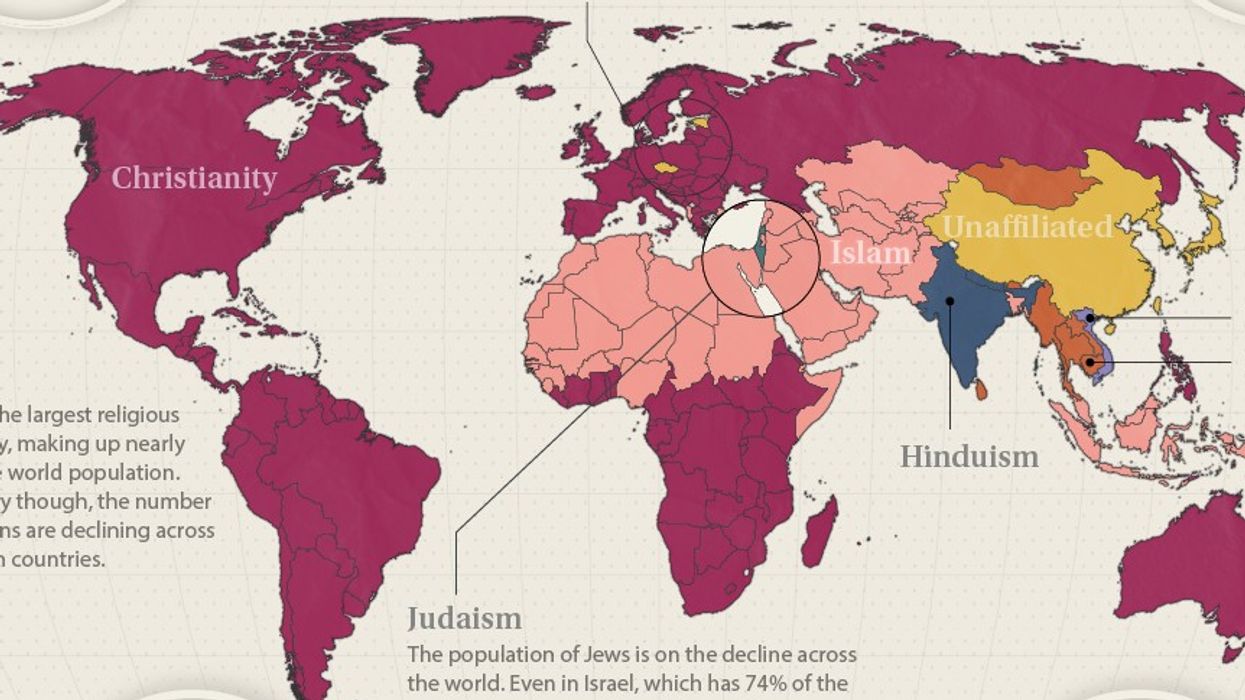Every few years, the media boldly announces the state of world religions. However, the final messages remain the same: that the first position is held by Christianity, followed by Islam. The organisation that gathers these statistics is the US-based Centre for the Study of Global Christianity, with its headquarters at the Gordon Conwell Theological Seminary, South Hamilton, Massachusetts. The statistics provided by this organisation—which, as the name suggests, is very much Christian—are widely circulated by global media.
The 2025 statistics place Christianity as the biggest religion in the world, followed by Islam. Backing up the Centre is Pew Research. Pew, too, is a Christian organisation. The word “pew” refers to the benches on which people sit in a church. Pew is also financially supported by the John Templeton Foundation, which is a Christian organisation.
The Centre for the Study of Global Christianity claims there are 2.6 billion Christians in the world. The World Christian Database contends that Catholics are the biggest denomination, with 1.27 billion followers. According to Vatican News, the global Catholic population increased by 1.15% between 2022 and 2023, rising from approximately 1.39 billion to 1.406 billion.
Not to be outdone, a Bible Society report suggests that the “hostility” and “apathy” to Christianity recorded among older generations are being replaced by “openness”, particularly among Generation Z (those born between the mid-1990s and 2010s), who “show above-average levels of warmth to spirituality”. The fact, however, is that a significant portion of Generation Z are religiously unaffiliated (“nones”). They are more likely to explore spirituality outside traditional religious institutions and may even blend elements of different faiths.
There are several dangers with Church-based statistics. There can be a self-reporting bias. The methodology employed and the context in which data is collected could involve potential bias. These are not independent surveys—they are Christian stats. Churches may highlight statistics that support their narratives while downplaying or ignoring data that contradicts their message. The way statistics are presented and interpreted can significantly influence public perception. For example, focusing on the number of people who identify as Christian can create a perception of religious strength, while ignoring the growing number of those who are religiously unaffiliated.
While this “good news” (pardon the pun) of Christianity being the biggest religion was lapped up by global media, on the ground, the situation is very different. The proportion of people in England and Wales identifying as Christian has fallen below 50% for the first time, according to census data. Some 46.2% of the population described themselves as Christian in the 2021 census.
In every country surveyed—except the Netherlands and Norway, where the religiously unaffiliated are the largest religious group—non-practising Christians make up the majority of Europe’s Christians. In many European countries, less than 5% of the population attend church. For every 100 new Catholics, more than 800 people leave the Church. In the US, 50 million people who call themselves Catholics do not do the minimum to be considered Catholic.
According to Pew Research, Hinduism is the third biggest religion, with approximately 1.2 billion adherents representing 14.9% of the world population. However, unlike Christianity, Hinduism is practised by the masses enthusiastically. And unlike Christianity, Hinduism—until now—was not a proselytising religion. The horrors perpetrated by the Catholic Church on non-Christians and the forced conversions are acts that Christ would never have approved of.
Regarding Buddhism, Pew Research calls it a major world religion with approximately 320 million followers. China, with the world’s second-largest population, has been Buddhist for thousands of years. Due to the Communist regime, Buddhism is not practised as openly as it should be. Pew Research claims that the true number of Buddhists in China cannot be ascertained because Buddhism there is mixed up with Taoism, Confucianism, and Folk Religion.
It can give a figure of Christians in Africa even though the Church has been obliged to accommodate African traditional religious practices. Christian missionaries often viewed ATRs (African Traditional Religions) as pagan and demonic, leading to the suppression and condemnation of traditional practices. African churches have dancing, playing of drums, ancestral worship, traditional healing, and spiritual healing. Christian missionaries have had to accommodate the African Church. It has yet to find a solution to the dichotomy it finds itself in. It is a matter of cognitive dissonance for the Church.
According to Pew Research, 90% of China’s population is religiously unaffiliated. This figure is ambiguous, as under the Communist regime people would be wary of being seen as affiliated to Buddhism. China’s spiritual heritage is guided by the three pillars of religion—Taoism, Confucianism, and Buddhism. All three have incorporated each other’s ideas and blended into a Buddhist way of life, which has deeply permeated Chinese society, even if it is not formally identified as Buddhism.
I would contend that there are at least 700 million Buddhists in China. There are Buddhist-majority countries like Cambodia, Mongolia, Laos, Myanmar, Vietnam, Sri Lanka, Thailand, and Mongolia. Chinese Buddhism is a major religion in Hong Kong, with a large number of followers and influence on the city’s culture. Buddhism has a large following in European countries too. The total number of Buddhists could be near the one billion mark.
Numbers alone, however, do not indicate the greatness of a religion. Hinduism is by far the oldest religion in the world. It is hundreds of thousands of years old. It has traditionally been non-proselytising. It believes all paths to God—if followed properly—can lead to salvation. Even though it is so old, Hinduism is very modern at the same time. The beginning of the 21st century has seen Hinduism actively taking its message to the world. Tens of thousands of people all over the world are taking up the faith.
Millions of people practise Yoga and have become vegetarians or vegans. Hindu gurus have millions of followers. From Cape Town to Copenhagen to Cincinnati to Kolkata, the chanting of the Hare Krishna mantra can be heard. The moral of the article is: do not accept Pew Research and fellow travellers as messengers of truth.
During the recent Kumbh Mela, half a billion Hindus came together at the confluence of the three holy rivers—Ganga, Yamuna, and Saraswati. Which other religion can bring together such numbers of people? Only a dynamic faith can do that.
(Nitin Mehta is a writer and commentator on Indian culture and philosophy. He has contributed extensively to discussions on Hinduism, spirituality, and the role of Gurus in modern society. You can find more of his work at www.nitinmehta.co.uk.)













